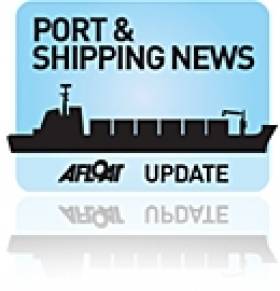Displaying items by tag: Britannic
New Book Delves Into Fate Of Titanic Sister Ship
#Britannic - A new book promises to answer what really happened to a sister ship of the Titanic that met a similar fate, as the Belfast Telegraph reports.
Mystery of the Last Olympian tells the story of the Britannic, which sank in the Aegean Sea following a explosion on 21 November 1916 while drafted as a hospital ship during the First World War.
All but 30 of its 1,065 passengers and crew were rescued after the incident, which saw the ship go under twice as fast as the ill-dated Titanic more than four years earlier.
And the facts of the Britannic's demise have been a mystery ever since, with claims that the vessel struck a German mine dismissed by others who believe a U-boat torpedo was to blame.
Co-author Richie Kohler, the only person to dive both the Titanic and Britannic wrecks, also set out to discover if structural changes to the latter vessel would indicate that Harland & Wolff and the White Star line "had reason to believe the Titanic had broken apart on the surface - a claim refuted at the time."
The Belfast Telegraph has more on the story HERE.
Harland & Wolff Secure Dry-Docking Contract of Canadian FPSO
#PORTS & SHIPPING – Harland & Wolff Heavy Industries Ltd (H&W) have secured a contract to dry dock and service the Searose (2004/139,950dwt) a Canadian east coast based floating production storage and offloading (FPSO) vessel later this year.
The 272 metres long by 46 metre beamed FPSO is operated by Husky Oil and is based at the White Rose oilfield, 350km off the Newfoundland coast.
Searose will be dry-docked at H&W's Belfast Repair Dock and also use the Repair Quay during May and June. The work at the Queen's Island facility will be led by an integrated project team made up of owner and H&W personnel along with key contractors and vendors.
"H&W, along with our key contractors, are pleased to have secured the SeaRose FPSO project and to demonstrate the capabilities of the UK Oil & Gas supply chain," said H&W Project Manager James Lappin.
"This is an important opportunity, not only for H&W but for Northern Ireland, to extend a welcome to our Canadian visitors and demonstrate our world class facilities."
"We are proud that they have put their trust in us," H&W Chief Executive Officer Robert J Cooper said. "All levels of H&W are committed to ensuring this important project is completed safely and successfully."
H&W was founded over 150 years ago and has built some of the world's most famous ships, including three from the White Star Line: the Olympic, Titanic, and the Britannic, P&O's Canberra and the RN World War II battle-cruiser HMS Belfast, where she remains at moorings on the Thames.
'Titanic Port’ Book Launched
A new book celebrating 400 years of the development of Belfast Harbour was launched on Monday in the offices of Belfast Harbour Commissioners. 'Titanic Port' was written by award-winning journalist and author Alf McCreary, and was commissioned by the port authority. For a full account of the book launch please click here (which includes a link to a podcast by the author).
The book tells the story of those who built the harbour and the foundations for Belfast's emergence as a major urban and commercial centre. The book traces the harbour records, dating back to 1613 when King James I authorised the construction of a small wharf on the river Lagan.
At over 400 pages long, 'Titanic Port' also contains over 700 illustrations, many previously unseen photographs and paintings from the harbour's archives, including panoramic port and city views.
A central theme of the book is the intimate relationship between Belfast and its harbour and how the Belfast Harbour Commissioners were instrumental in bringing shipbuilding to the city. In particular, how they helped ensure that Titanic and her sister ships, Olympic and Britannic were built at Queen's Island. In addition the Commissioners investment of the Thompson Dock, where the trio of iconic liners were fitted out, was the largest of its kind in the world.
The cost of the dock was almost the same price as the Titanic and was specifically built to help Harland & Wolff secure the contract from the ships' owners, the White Star Line.
'Titanic Port' also follows the development of the Jacobean and Georgian port which was barely navigable due to Belfast Lough's treacherous mud-banks and sandbanks. Without the creation of a navigable channel over the centuries by successive harbour authorities, it is arguable that Carrickfergus might have become Ulster's main seaport.
Also examined is the vital role the harbour during both World Wars I and II and how the Harbour Estate escaped the worst of the 'Troubles' and its recent re-emergence as a major economic driver for Northern Ireland's economy. The social history of Belfast is also explored and how it influenced the port, in particular, Sailortown.
'Titanic Port' is currently on sale priced £25 (stg) and available online at http://www.titanicport.comThe book was produced by Dr. Claude Costecalde of Booklink and designed by Wendy Dunbar.
For information in general about Belfast Harbour Commissioners logon to www.belfast-harbour.co.uk/






























































